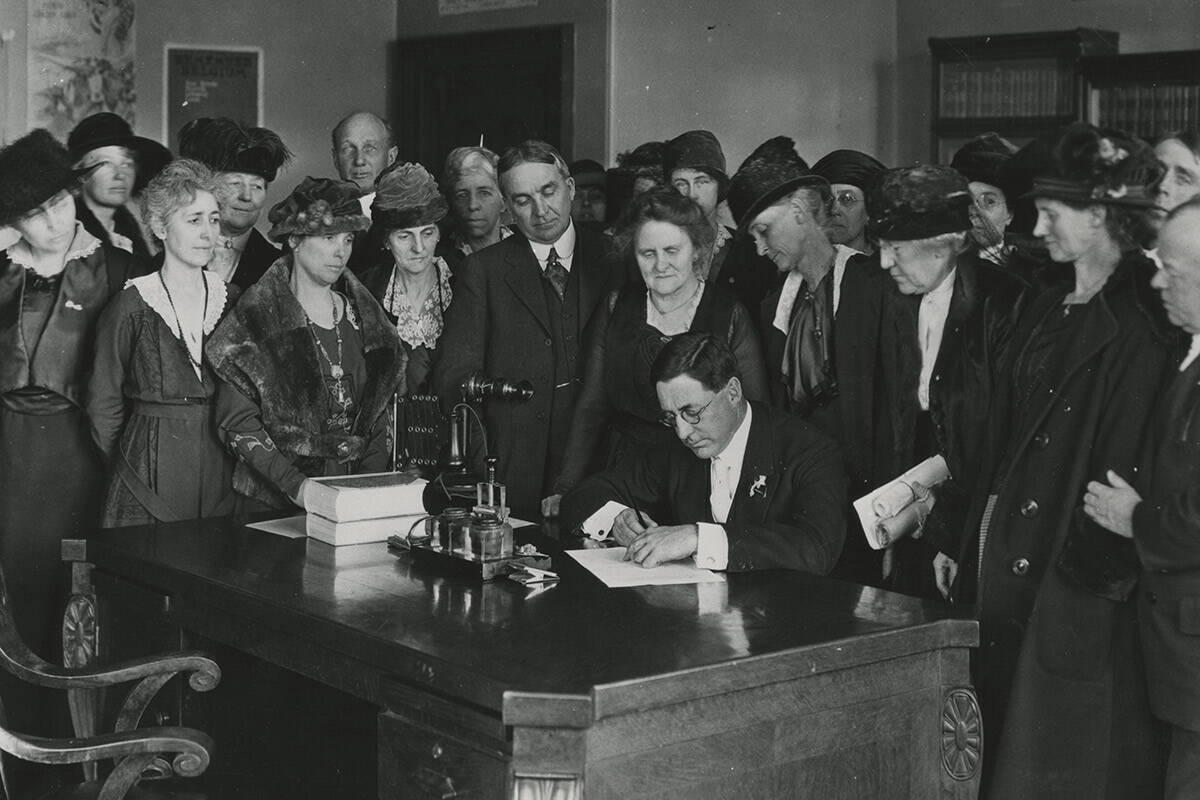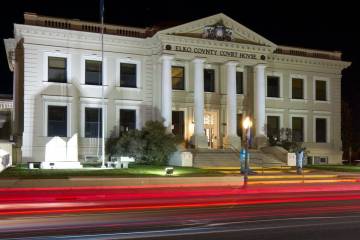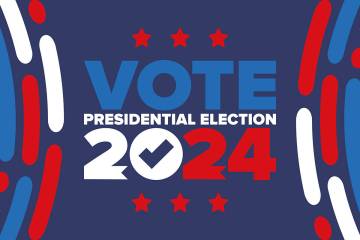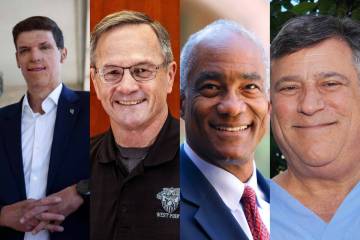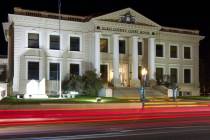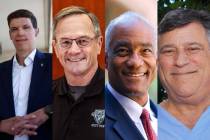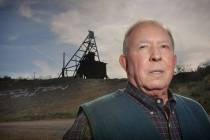A look back at the history of Nevada women’s suffrage
If the Nevada Legislature had amended the state constitution to allow women to vote when it first came up in 1869, just five years after statehood, it would have become the first state to legalize women’s suffrage.
Instead, the struggle for voting rights in the Silver State would last 45 years — failing twice over four decades to pass in two consecutive legislative sessions, which is required before an amendment can be put before voters.
It wasn’t until Nov. 3, 1914, when voters finally got their say, that women’s suffrage finally came to the state.
Nevada women organized for the cause
DeAnna Beachley, professor of U.S. history and women’s studies at the College of Southern Nevada, said without the organization, speeches and passion of Nevada women for the cause, women would have had to wait even longer for their ability to participate in democracy.
The Nevada Equal Franchise Society, a group formed by Nevada women in 1911, brought women together who cared deeply about the issue of women’s suffrage. Society members traveled from Reno to Carson City by train to speak before the Legislature to convince them to pass a resolution to amend the constitution.
But all good organizations need a strong leader.
That leader would be Anne Martin, nicknamed “The General” because of her strong mobilization skills. She was born in the small mining town of Empire about 100 miles north of Reno. Martin first became involved in the British suffrage movement while living overseas. In February 1912, she became president of the Nevada Equal Franchise Society, and by early 1913, the organization grew under her leadership to more than 500 members from 11 of the states’s then 16 counties.
Although the national American Woman Suffrage Association would often try to tell Martin how she should run the state campaign, she knew one thing the national group didn’t: what tactics would work for Nevada.
“Our population is not like some of these other places because of the transient nature and the fact that there’s this great amount of territory and very sparse population centers around the state, so it wasn’t going to work the same way,” Beachley said.
Like in other states, the Nevada society would participate in parades, which were seen as radical for their time, and organize events to promote their cause. Suffragists worked to remind voters how important it was to many women to be able to vote.
Still, reaching women across the state — from Reno to Las Vegas — was a challenge.
Spreading the message on foot
“There’s no rail line that connects the north and the south. There are no real roads. So if you were trying to reach all these people, you had to take one rail line to one place and then get on a smaller trunk line,” Beachley said. “It’s just remarkable to think about what that entailed to do that.”
Martin and other suffragists would travel around, often by horseback or on foot, into mining camps and ranches around the state to try to reach as many voters as possible ahead of the 1914 vote by the all-male electorate.
“What really pushed things further, particularly in Nevada, is the fact that the Nevada Equal Franchise Society was able to get support from a lot of rural Nevadans,” Beachley said. “Most of the votes came from these smaller towns, these mining towns, these little areas. Reno and Carson City did not vote in favor, and those were the most populated parts of the state.”
Mining town residents took interest in women’s suffrage because workers believed it could support their towns’ unionization efforts, Beachley said.
“They understood that if their wives were able to vote, that would increase the power of the labor voice in the state,” Beachley said.
Street speaking was a common tool in many states to rally voters to support women’s suffrage. When women traveled to give speeches, heckling was common, but talented speakers like Mabel Vernon and Sara Bard Field knew how to handle vitriol.
Unfortunately for historians, text of these speeches is very difficult to find because most of them were extemporaneous.
“They may have a couple of ideas written down on a scrap of paper, but they were able to tailor their talk based on where they were,” Beachley said. “They knew how to think on their feet that way. That, I think, is one of the unappreciated parts of the suffrage movement.”
‘(Men) didn’t want to give up any control’
The greatest enemy of the suffrage movement in Nevada was George Wingfield, who gained money and power from mining booms in Goldfield and Tonopah. Wingfield was very active in Republican politics, the party that opposed suffrage.
He worked to get Nevada newspapers to write editorials against giving women the right to vote.
Wingfield and other anti-suffragists worried women would advance prohibition and make employing children more difficult, Beachley said.
“It goes back to, (men) were in control and they didn’t want to give up any control,” Beachley said.
Suffrage wins
In spite of opposition, voters approved the constitutional amendment in 1914 granting women the right to vote. Twelve counties voted in favor of the amendment, with Nevada’s four most-populated counties, Washoe, Storey, Ormsby (known as Carson City today) and Eureka, voting no. Nevada women voted for the first time in city elections in 1915, and in county and state elections the following year.
In 1920, the ratification of the 19th Amendment granted all U.S. women the right to vote.
Twenty-eight years later, in 1948, Martin’s memoirs were published. Martin’s memoirs conclude with her perspective on the movement’s significance: “The whole suffrage campaign is a demonstration of the spiritual power of the minority in converting the entrenched mass opinion of the majority for the benefit of the State. It surely should be held up as an example for boys and girls, the future leaders and voters of Nevada, to follow. History shows time and again that out of such effort is born power for the advancement of all.”
Contact Taylor Lane at TLane@reviewjournal.com. Follow @Tmflane on Twitter.



